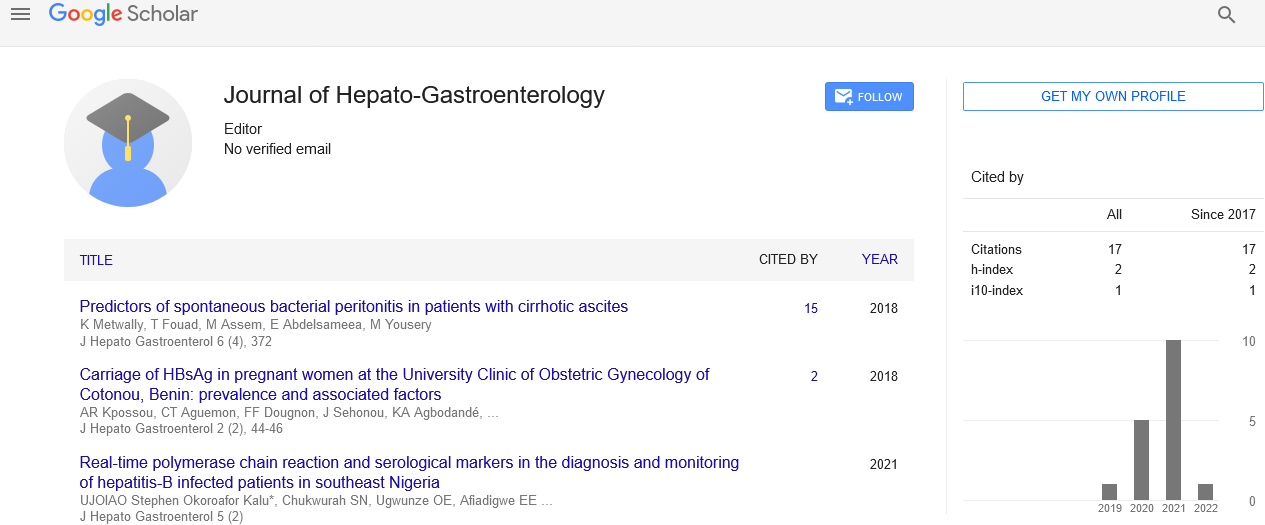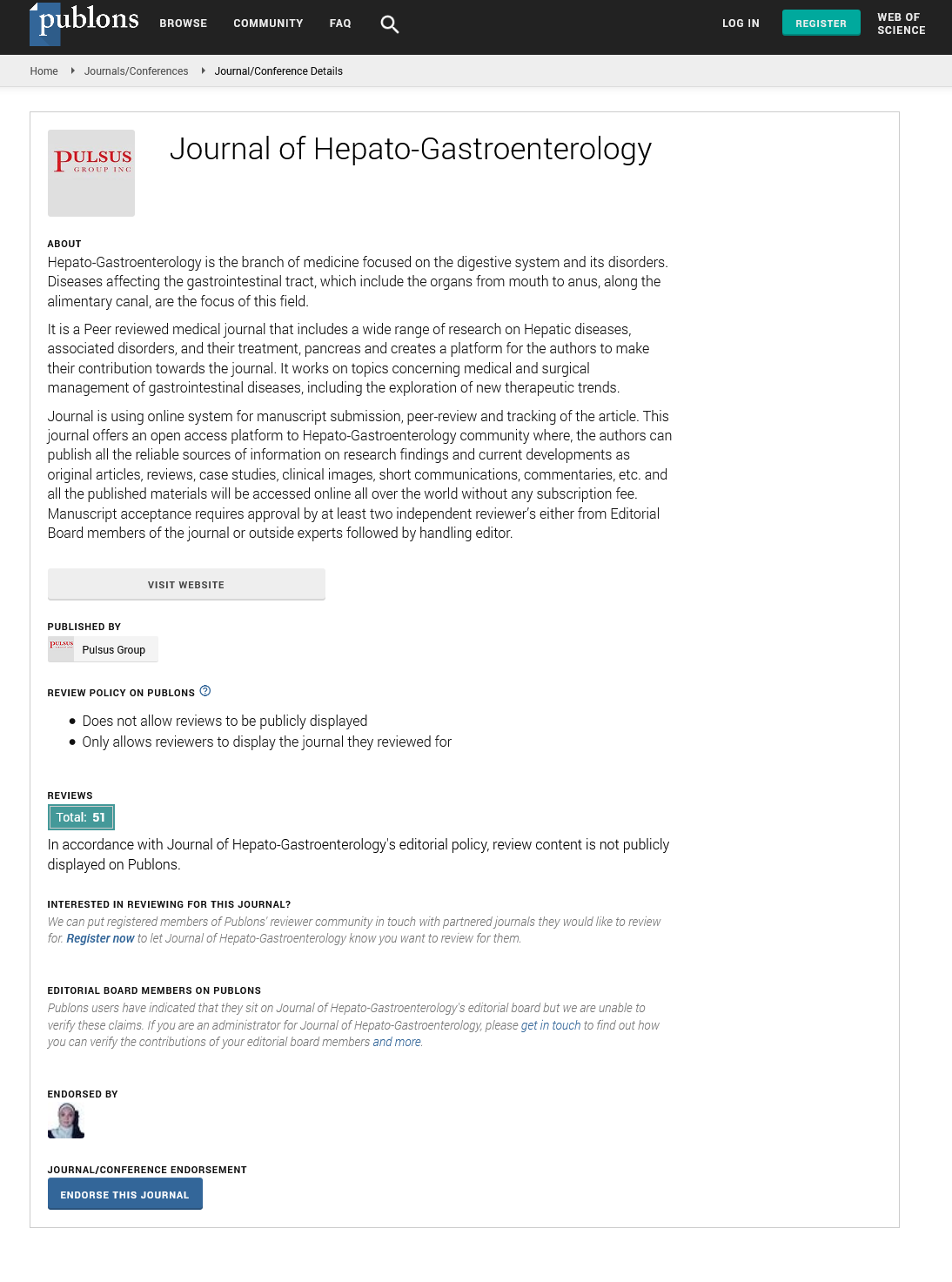A brief overview of partial hepatectomy
Received: 10-Nov-2021 Accepted Date: Nov 24, 2021; Published: 01-Dec-2021
Citation: Perinel L. A brief overview of partial hepatectomy. J Hepato Gastroenterol 2021;5(2):8.
This open-access article is distributed under the terms of the Creative Commons Attribution Non-Commercial License (CC BY-NC) (http://creativecommons.org/licenses/by-nc/4.0/), which permits reuse, distribution and reproduction of the article, provided that the original work is properly cited and the reuse is restricted to noncommercial purposes. For commercial reuse, contact reprints@pulsus.com
Description
A partial hepatectomy, or liver resection, is a kind of surgical treatment designed to cast off cancerous tumors from the liver. Because this organ has the great potential to regenerate itself, it is able to once in a while restore its mass to make amends for tissue misplaced via surgical treatment. A liver resection can be advised to deal with colorectal cancer that has spread out to the liver and assist prevent further metastasis. To decide whether or not an affected person is a candidate for a partial hepatectomy, a health practitioner will generally consider: The volume of the cancer – Large or multiple liver tumors, also tumors that have an effect on multiple lobes of the liver, can complicate or avoid surgical removal. The area of the tumors –Liver tumors which might be located near blood vessels can be inoperable; alternative remedies might also additionally consist of intra-arterial chemotherapy and chemoembolization. The extent of the surgical treatment that might be required to cast off the complete tumor – A considerable part of healthy liver tissue need to remain after surgical treatment so as for the organ to feature well and regenerate.
Partial hepatectomy (PH) model offers an excellent possibility to look at the proliferative functionality of the existing regular hepatocytes in a physiologic way given that the remnant liver isn't damaged and there's no necrosis with its consequent macrophages and different cells infiltration whose presence hamper evaluation of the biochemistry of the regenerative process. After PH usually quiescent hepatocytes enter the cell cycle to update the eliminated component and the authentic hepatic mass is carried out after duration of approximately 6-8 weeks (in human) through tightly synchronous rounds of the ultimate hepatocytes replication.
Hepatic resection is a well-established remedy for patients with liver metastases from colorectal or neuroendocrine carcinoma. However, for patients with liver metastases from different carcinomas, the cost of resection is incompletely described and nevertheless debated. For hepatic malignancies positioned on the cranial part of the liver and which are close to or invade primary hepatic veins, partial hepatectomy with primary hepatic vein resection and next reconstruction with the use of an interposing graft is now and again the most effective curative option in patients with poor liver function. Numerous graft materials had been defined for reconstructing the principle hepatic veins or portal vein.
Conclusion
Hepatic resection is needed to control many kinds of pathology, malignant and benign. Planning hepatic resection needs to consider the nature of the lesion and its area inside the liver, the patient's anatomy, and the quality and quantity of the liver tissue to be able to stay after resection. Perioperative consequences for hepatic resection have advanced because of higher surgical strategies that take benefit of the segmental anatomy of the liver, improved strategies for management of bleeding, and improved extensive care. Hepatic resection that is carried out in high-extent facilities with the aid of using in particular skilled hepatobiliary surgeons is associated with higher outcome. It can be needed to deal with situations including Liver cancer, infection, trauma or a hereditary disease. As one of the maximum common stomach surgical procedures carried out, it may be thoroughly carried out with the use of endoscopic strategies. Major Hepatectomy is commonly required for hepatic malignancies placed within the cranial part of the liver, together with segment 8, that's near to, or invading, a prime hepatic vein. In patients with cirrhosis or chemotherapyrelated liver injury, however, primary hepatectomy can't be achieved due to inadequate remnant liver volume. To obtain healing resection for such cases, partial hepatectomy with segmental elimination of the infiltrated vein is a useful choice to hold enough feature of the remnant liver.






